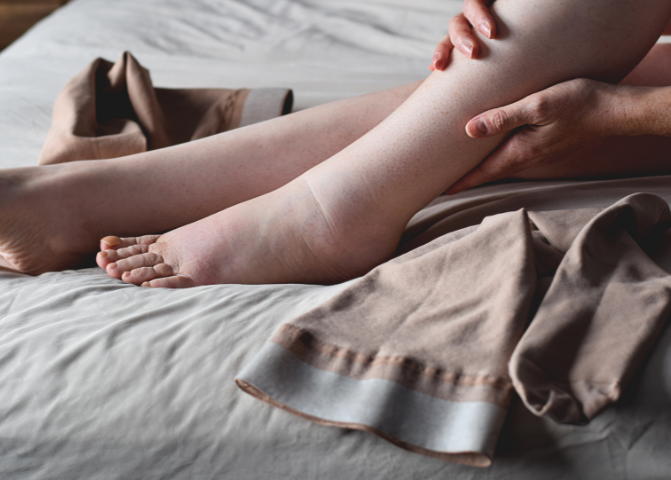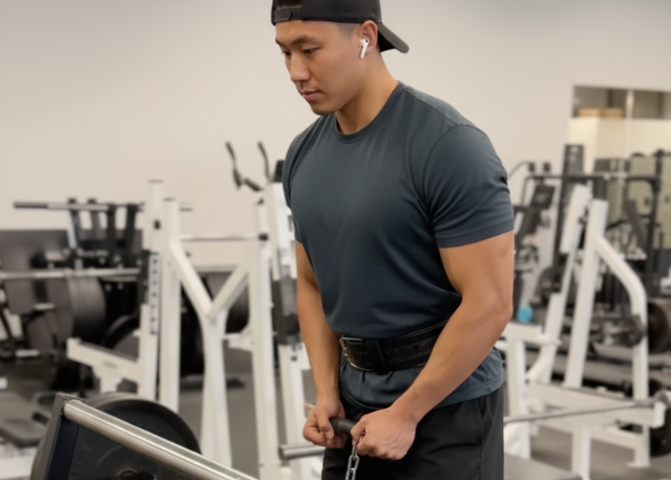14/05/2023
Diabetic Socks – What Are They And How Do They Work?
Table of Contents
Have you heard of diabetic socks? How do they work? Read on to understand what they are, the different types available and where to get them.
Diabetes is a serious chronic condition that impacts every organ in your body. You may have heard about diabetic socks, but are unsure what they are and if you need them. We’re here to help you understand everything about compression socks for diabetics so that you can make the right decision when it comes to improving your health.
What are diabetic socks?
Diabetic socks are compression stockings that are designed to help improve circulation in the legs. They’re worn by people with diabetes and can help prevent complications from this condition, such as ulcers and foot damage.
They may also reduce pain in the legs and feet, especially if you suffer from swelling, varicose veins or ulcers on your skin.
Who needs to wear diabetic socks?
If you have diabetes, your regular doctor may advise you to wear diabetic socks (compression socks) as part of your management plan. There are many other reasons why people may need to wear these socks.
- Anyone with diabetes
- Anyone with poor circulation (like those who have heart failure or blood clots) with ongoing lower leg swelling
- Venous or lymphatic swelling
- People who have had surgery or an injury on their legs or feet
- Those who are at risk for developing blood clots
- Individuals with mobility challenges
- Pregnancy
The most effective compression socks for diabetes patients are designed to improve blood flow.
The most effective compression socks for diabetes patients are designed to improve blood flow.
Compression socks help keep your feet healthy and comfortable by reducing swelling, improving circulation and increasing energy levels. They can also be an important part of managing the pain associated with peripheral neuropathy, which is nerve damage in the legs or feet that causes numbness or tingling sensations (also known as “pins and needles”).
Compression socks work by gently squeezing your leg muscles – this helps reduce swelling in your lower extremities. In addition, they’ll increase blood flow back up toward the heart to prevent pooling of fluid in the lower legs.
What are the benefits of wearing diabetic socks?
Compression stocks help to improve the blood flow from the lower legs back to the heart.
- Reduces swelling and improves circulation
- Helps prevent ulcers and infections
- Helps prevent foot problems and injuries.
The right sized, quality compression socks can help prevent complications from diabetes. Compression socks are not a cure for diabetes, nor are they a substitute for medication or diet and exercise.

Are there different types of diabetic socks?
There are a few different types of diabetic socks.
Compression
Compression stockings are graded by the degree of compression at the ankle. Often these grades are:
- Less than 20 mm hg
- 20-30 mm hg
- Greater than 30 mm hg
The greater the compression, the tighter the stocking with greater improvement in compressing blood back towards the heart. However, tighter stockings are generally more uncomfortable. The overall pressure is affected by factors such as the elasticity and stiffness of stocking material, the size and shape of your legs, and your movements and activities. Your doctor or diabetes educator will advise you what is the right grade of stocking for you.
Material
The first is cotton, nylon and wool. Cotton is a natural fiber that comes from plants, so it’s breathable and absorbs moisture well–but it can also be less durable than synthetic materials like nylon or wool. Nylon is a synthetic fiber that’s similar to silk in its softness but stronger than either silk or cotton; it has excellent elasticity (which means it stretches) and doesn’t lose shape over time like other fabrics might do if they’re not treated properly during manufacturing processes. Wool is another natural fiber that comes from sheep; most people associate this material with sweaters because they’re so warm! The downside? It can be expensive compared to other materials.
The best compression socks for diabetic patients are made from a soft and breathable fabric that is designed to stay comfortable even during prolonged wear.
How do I know what Size I Need for Diabetic Socks?
It’s very important to get the right size stocking.
Your diabetes educator, GP or podiatrist can assist. Poorly fitting stockings can cause discomfort and, at worst, damage to your skin at pressure points or areas of poor blood flow.
How do I Wash My Diabetic Socks?
- Wash them by hand.
- Wash them in cold water.
- Do not use bleach.
- Don’t iron them or tumble dry them (or any other heat-related method). You can hang your diabetic socks on a clothesline to air dry, which will help keep their shape and make sure they don’t shrink.
Where to buy diabetic socks?
You can buy diabetic socks at most pharmacies and medical supply stores. They’re usually located in the section with other compression garments, such as knee-highs or thigh-highs.
If you’re buying online, make sure to measure your calf circumference before ordering–you’ll want to get a pair that fits snugly but not too tightly (wearing them too loose will cause problems). Remember that if you have circulation issues in your legs due to diabetes or other causes, they may swell up over time; this means that even if they fit well when you first put them on, they might need adjusting later.
How to Get Help with Diabetes
Talk to an online doctor today with Medmate to get some initial advice. Our doctors can help with online prescriptions for regular medications or medical certificates if you are unable to get an appointment with your GP.
Conclusion
Compression socks can help improve circulation and reduce pain in the legs and feet. They are also used to prevent blood clots, swelling, ulcers and infections in people with diabetes.
Compression socks work by applying pressure on your legs while they’re being worn. This helps reduce swelling in your feet due to poor circulation which can lead to pain, discomfort and diabetic complications.
We hope that this article has helped you understand how compression socks can help improve circulation, reduce pain in the legs and feet, and prevent complications from diabetes. Discuss the use of diabetic socks with your GP or diabetes educator as part of your diabetes management plan.
Recommended reading
Search for a specific topic or filter by categories to find information on what you need to know on the full Medmate Journal


The Belt Squat RDL is a Game-Changer
Looking to build a stronger, more powerful lower body while minimizing risk? The Belt Squat RDL might just be the exercise you’ve been missing. This unique movement, often overlooked, offers…

